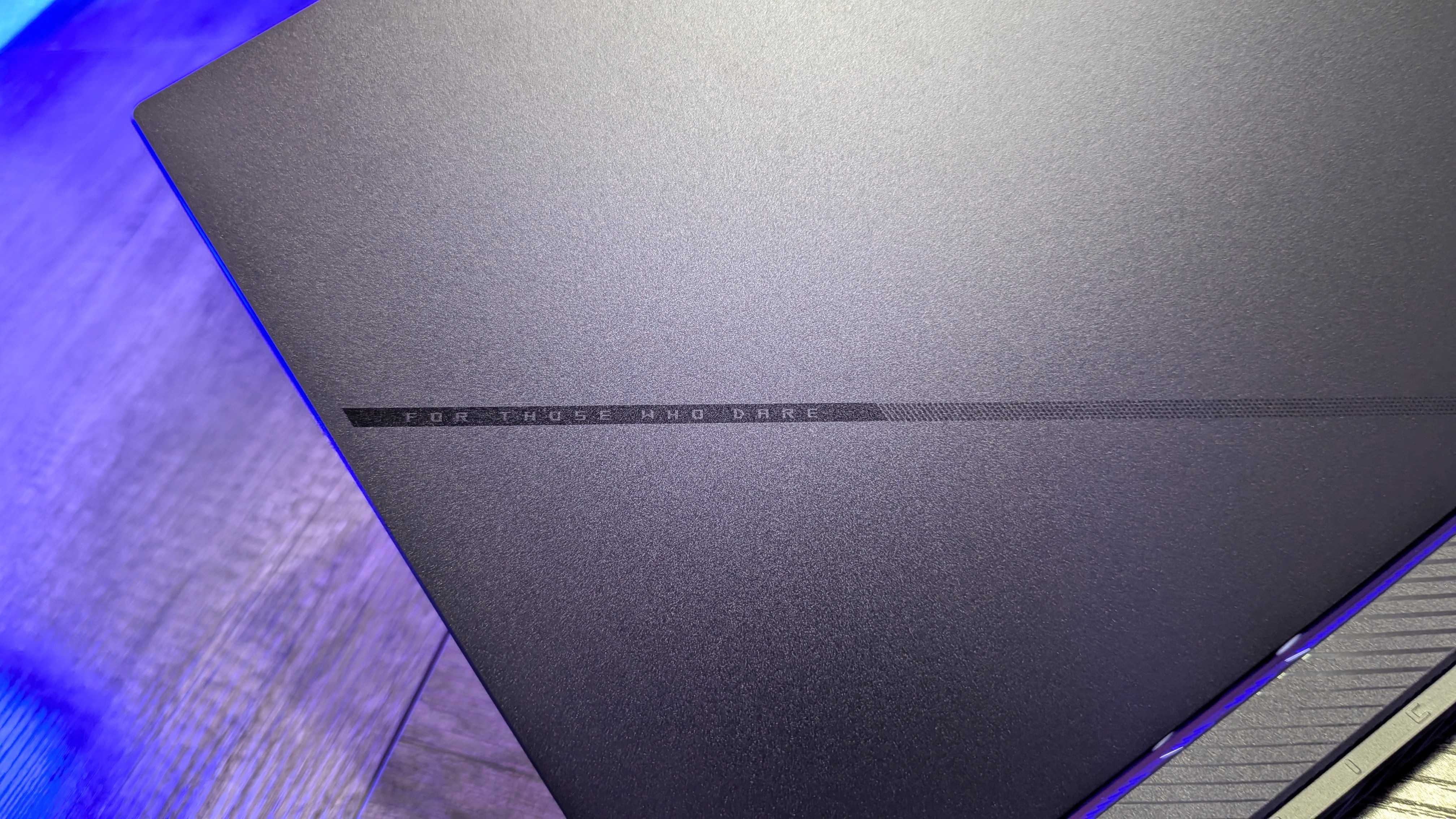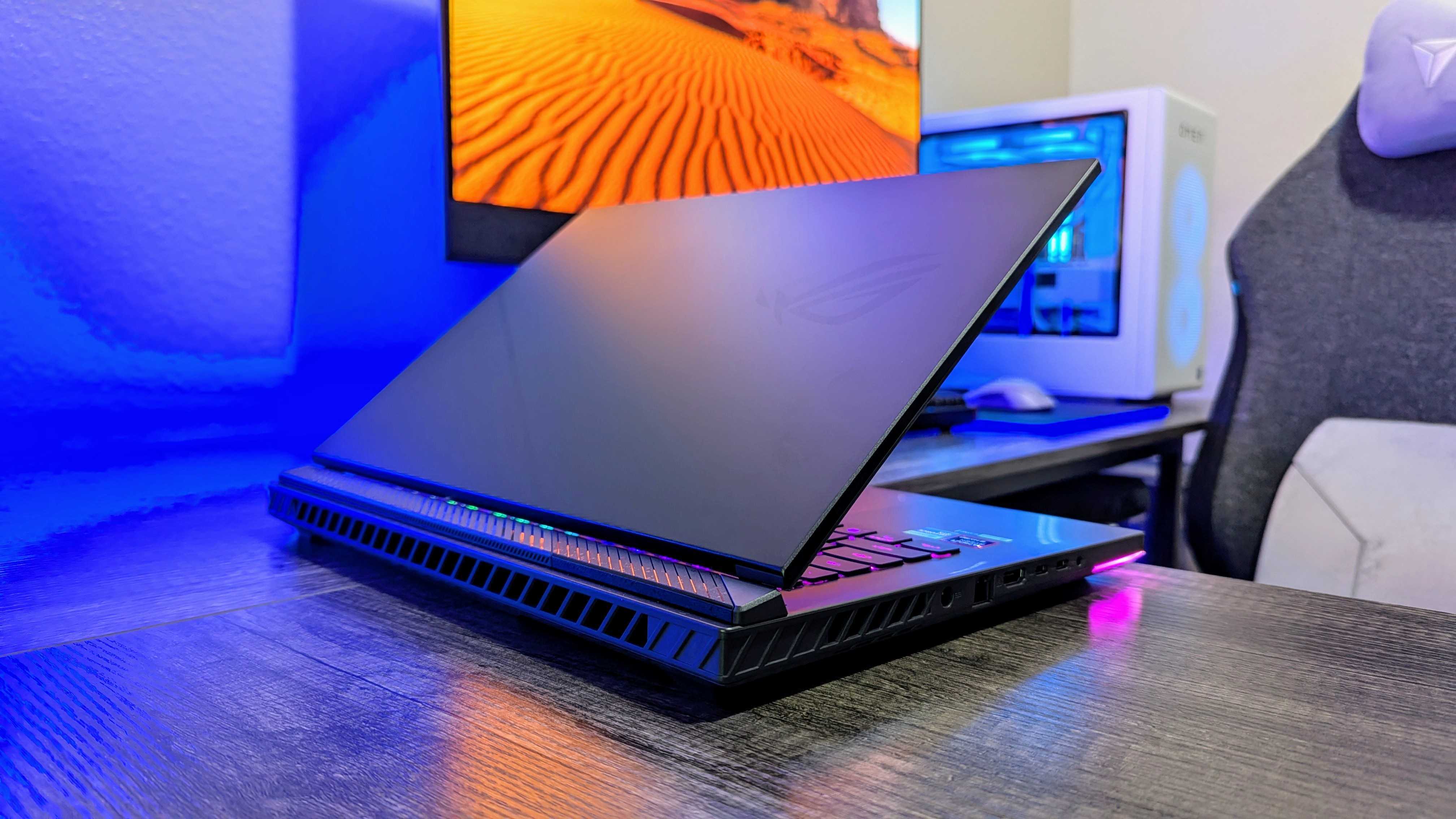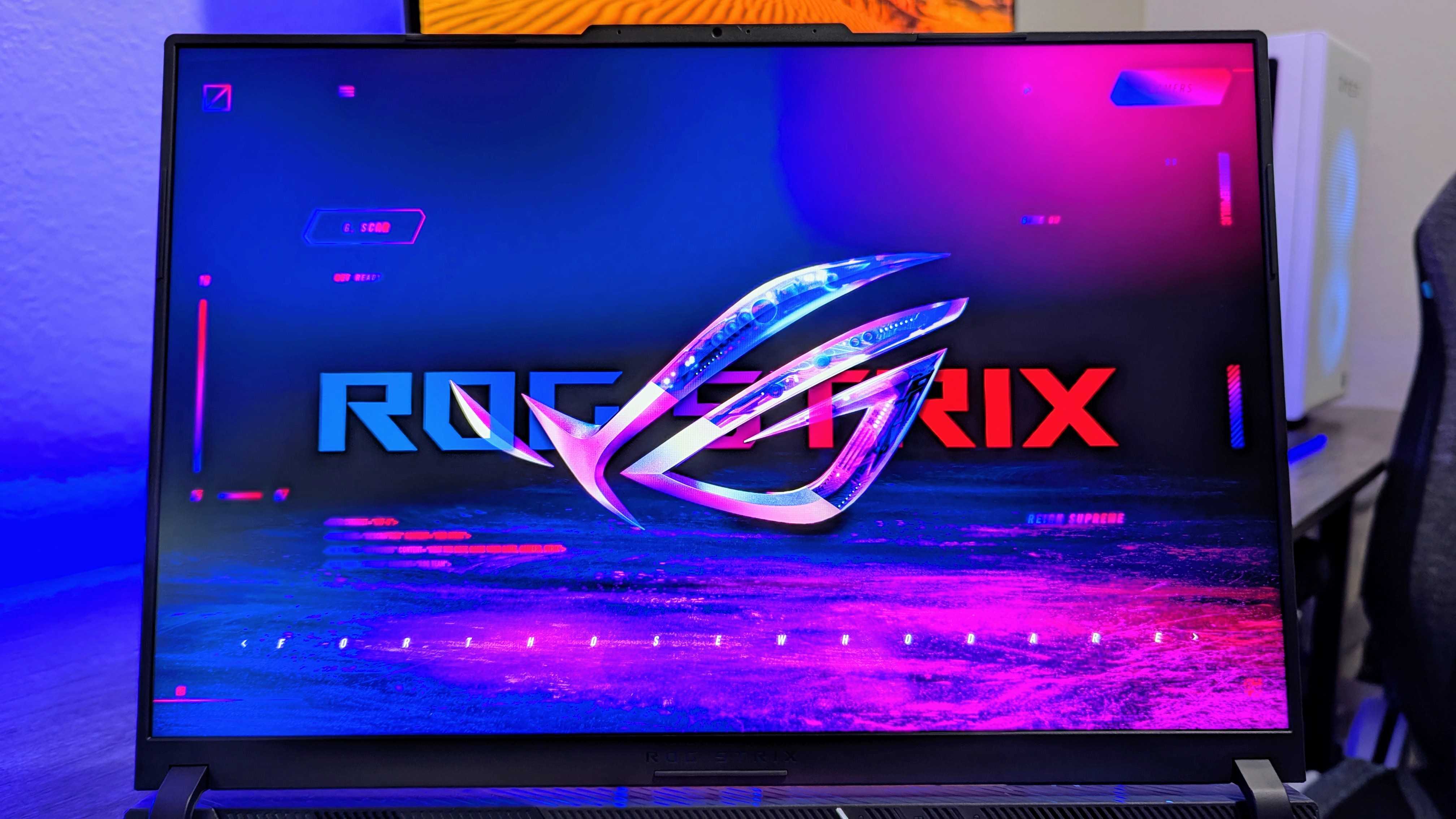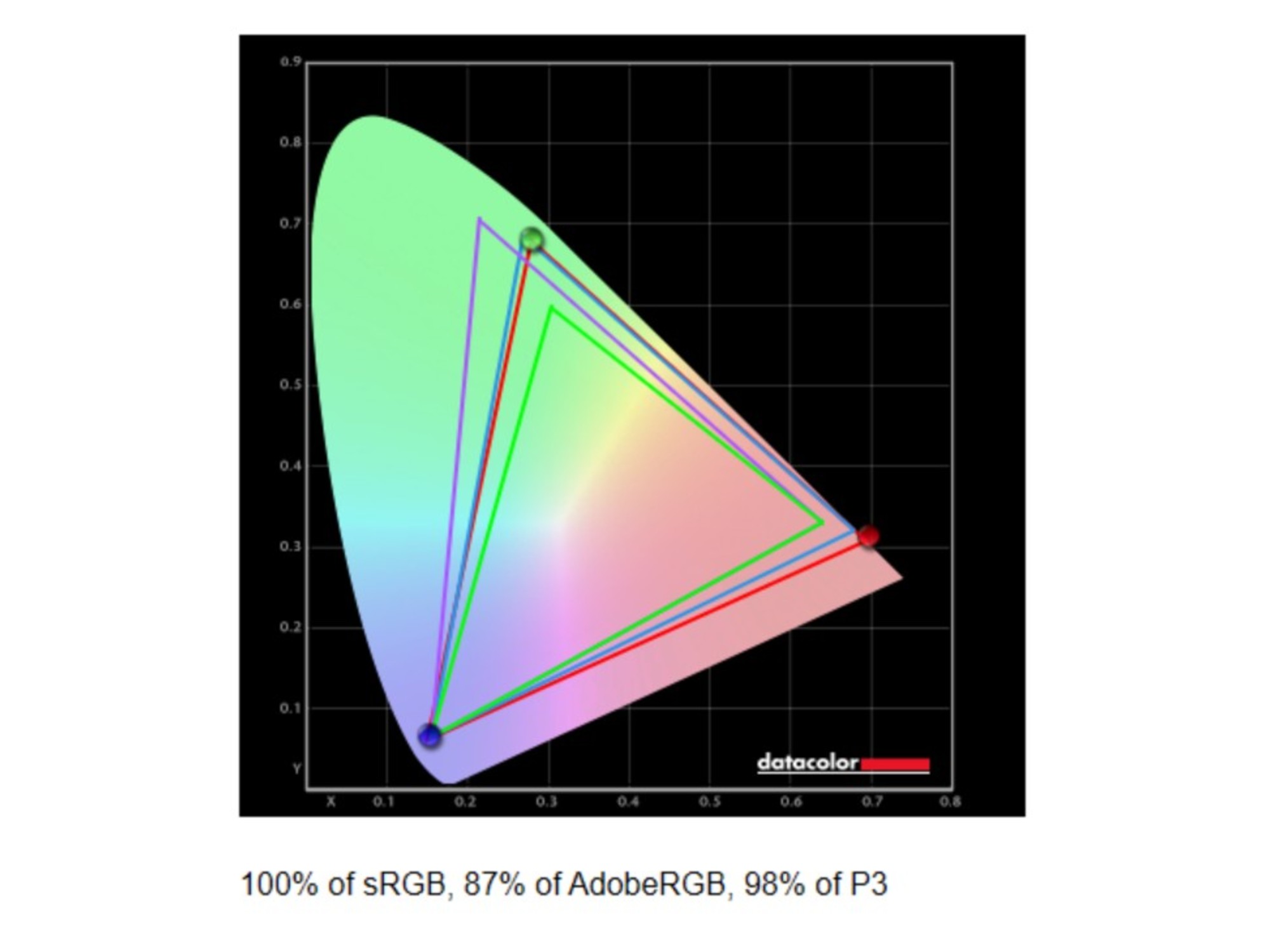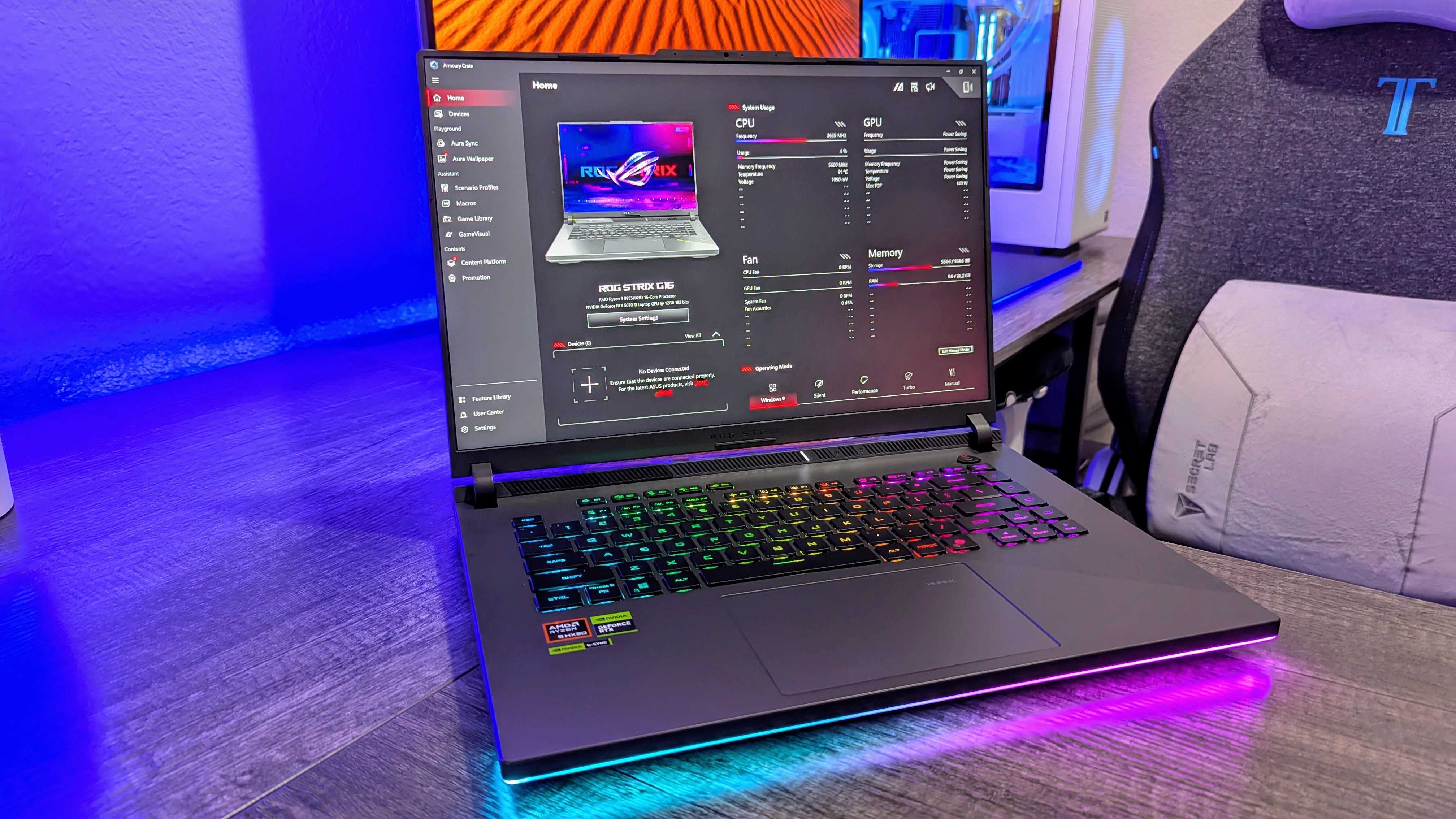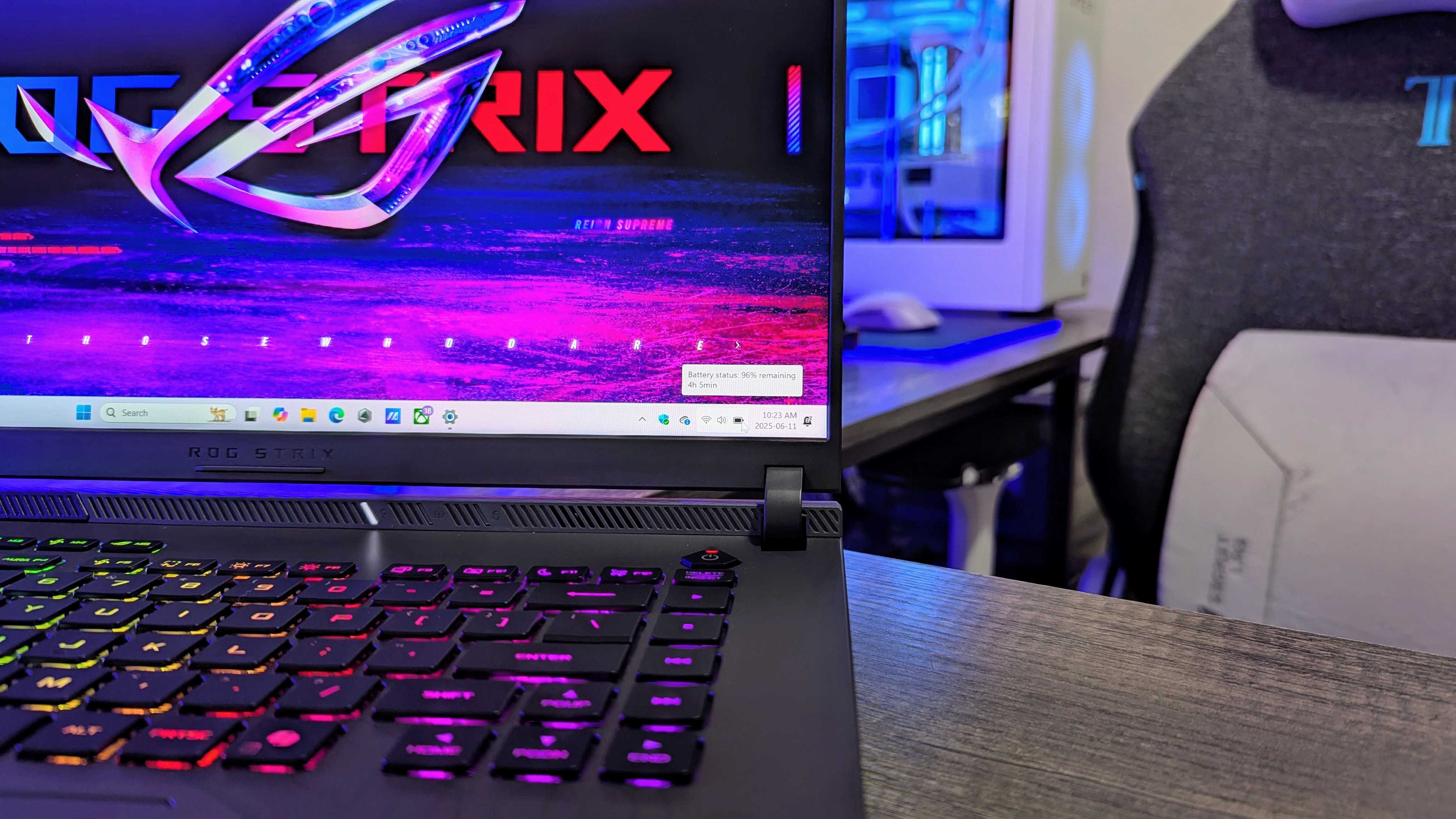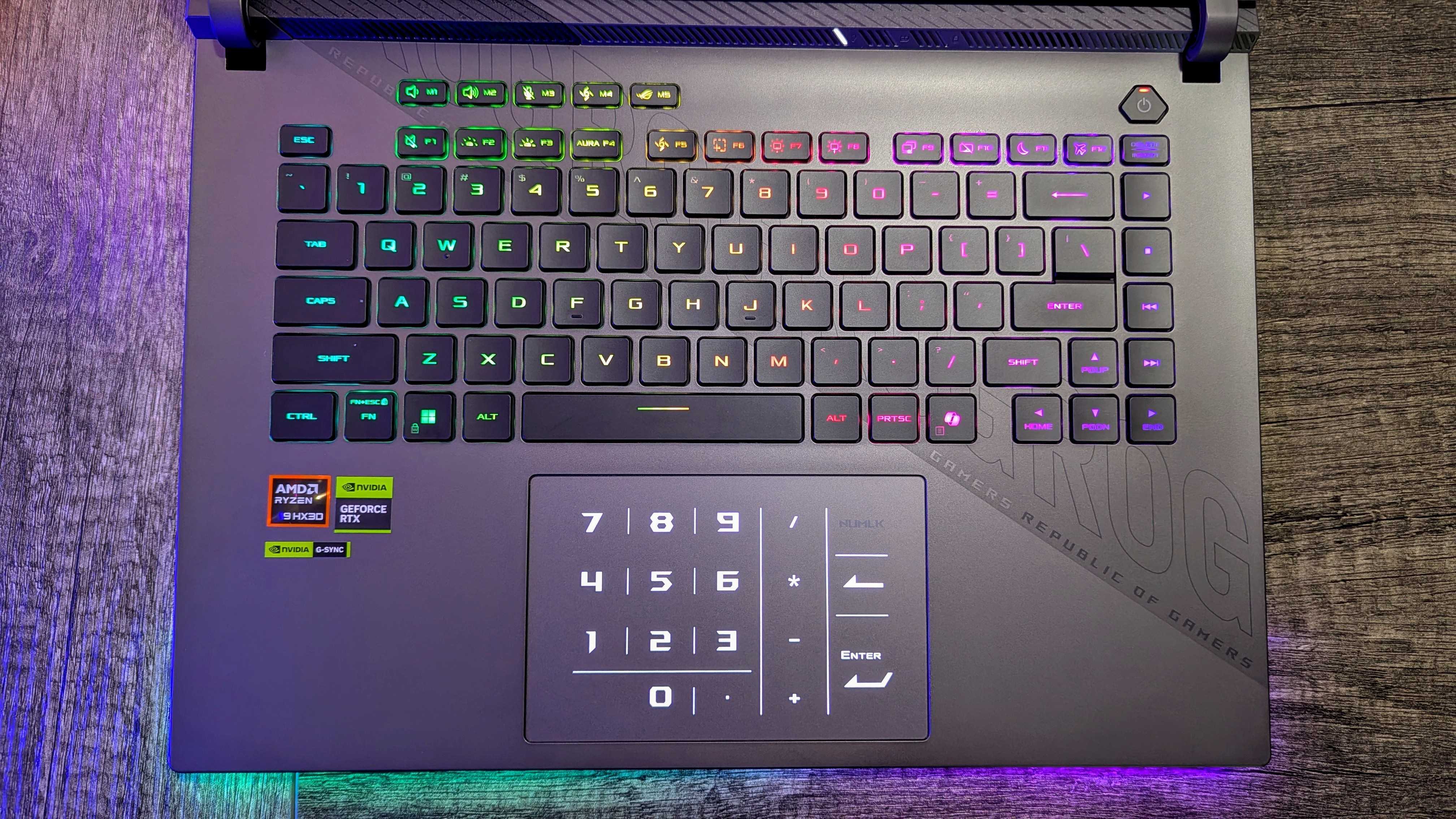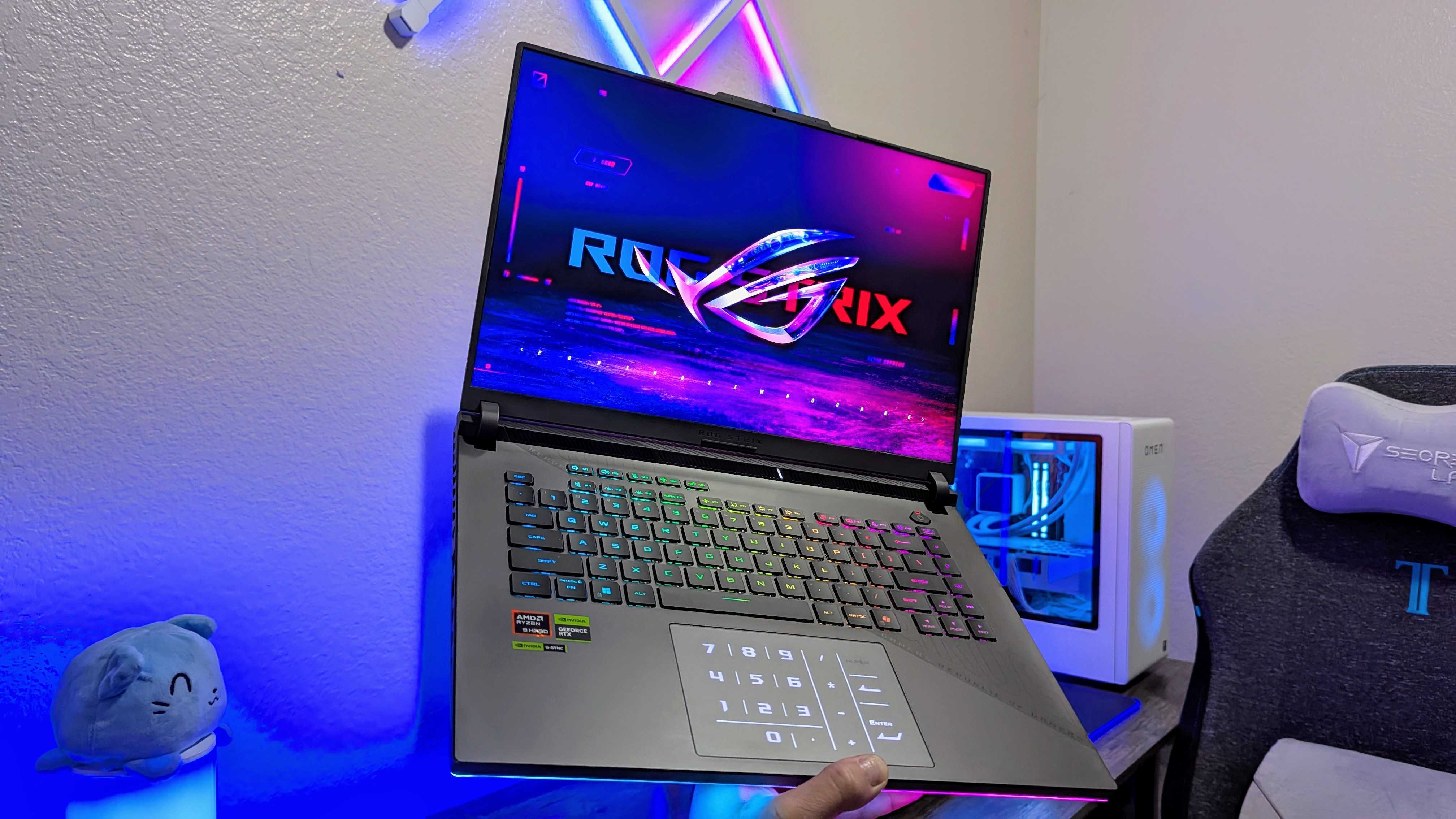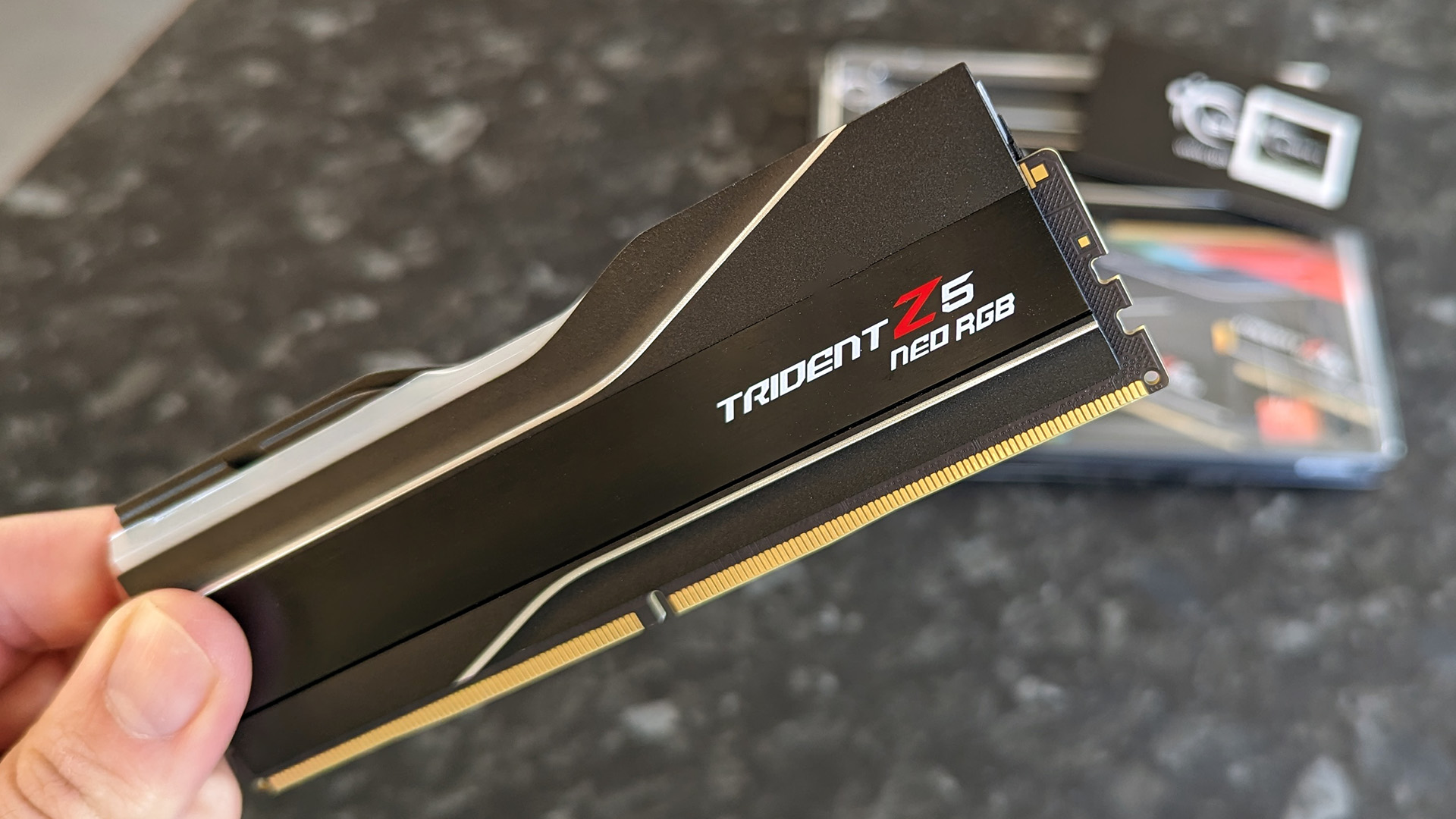Windows Central Verdict
The latest ASUS ROG Strix G16 takes full advantage of AMD's most powerful mobile processors to offer excellent performance and a consistent gaming experience, and may end up being an underrated value-play in the premium gaming laptop segment this year. Despite that CPU performance, though, you're stuck on last year's design and can't get the most powerful GPUs.
Pros
- +
Reliable performance with AMD and NVIDIA
- +
Bright, vibrant, and responsive IPS LCD display
- +
Comfortable keyboard with plenty of extra keys
- +
Arguably a better value than comparable Intel-powered laptops
Cons
- -
Mostly plastic design
- -
The Intel version got a more thorough year-over-year update
Why you can trust Windows Central
The ASUS ROG Strix G16 is a popular gaming laptop that sits at the entrance to the premium segment, and it often comes in both AMD and Intel variants.
For 2025, those versions couldn't be more different, with the Intel models enjoying a redesign while the AMD models recycle last year's chassis. Despite a less exciting upgrade, though, it's the AMD-powered ROG Strix G16 that I think most people should have their eye on.
AMD's most powerful mobile processor ever puts up an impressive fight against Intel, and the ROG Strix G16 in general offers an excellent gaming experience. While this is still an expensive laptop, you can also argue it provides greater bang for your buck than its Intel competitors.

Gaming laptops are getting more powerful and more refined each year, but they're not getting more affordable. I pit every machine against each other to help you make the best purchasing decision for your needs.
This review was made possible thanks to a review sample provided by ASUS. ASUS had no input nor saw the contents of this review prior to publication.
ROG Strix G16 review: Pricing and specifications
The ASUS ROG Strix G16 (2025) is actually and confusingly two entirely separate laptops.
The AMD version of the ROG Strix G16, which is the model I'm reviewing, starts from $2,399.99 at ASUS, but effectively only comes in two configurations, both with a 16-inch, 240Hz IPS LCD display, an NVIDIA GeForce RTX 5070 Ti GPU, 32GB of RAM, and 1TB of SSD.
The ROG Strix G16 you can get for $2,499.99 at ASUS is basically identical, but that extra $100 gets you AMD's unique X3D tech for even better gaming performance.
The Intel version of the ROG Strix G16 starts from $1,999.99 at ASUS with an Intel Core Ultra 9, GeForce RTX 5060, 16GB of RAM, and 1TB of SSD storage.
All the latest news, reviews, and guides for Windows and Xbox diehards.
Spec | ASUS ROG Strix G16 (2025, AMD) |
|---|---|
Display | 16-inch IPS LCD ROG Nebula Display, QHD+ (2,560 x 1,600) resolution, 240Hz refresh rate, 3ms response time, 500 nits max brightness, 100% DCI-P3 color gamut, Dolby Vision HDR support, NVIDIA G-SYNC certified, Pantone Validated, anti-reflection coating |
CPU | Up to AMD Ryzen 9 9955HX3D (Zen 5, 16 cores, 32 threads, up to 5.4GHz max boost, up to 120W) |
GPU | NVIDIA GeForce RTX 5070 Ti (Blackwell, 12GB GDDR7 VRAM, up to 140W) |
Memory | 32GB (2x 16GB) DDR5 @ 5,600MHz (2x SODIMM slots) |
Storage | 2TB M.2 NVMe PCIe Gen 4.0 SSD (2x M.2 slots) |
Ports | 1x USB Type-C 4.0 (40GBps, DisplayPort 1.4, Power Delivery 3.0), 1x USB Type-C 4.0 (40GBps, DisplayPort 1.4), 2x USB Type-A 3.2 Gen 2 (10GBps), 1x HDMI 2.1 (FRL), 1x RJ45 Ethernet, 1x 3.5mm audio jack |
Connectivity | Wi-Fi 6E 2x2, Bluetooth 5.3 |
Battery | 90Whr, 280W DC charger |
Dimensions | 354 x 264 x ~22.6-30.4mm (13.94 x 10.39 x ~0.89-1.2in) |
Weight | 2.5kg (5.51lbs) |
Warranty | 12-month standard |
In the box, you'll find the ASUS ROG Strix G16 (2025), a proprietary 280W charger, and 3 months of PC Game Pass.
ASUS ROG Strix G16 (2025, AMD) — Ryzen 9 9955HX3D | GeForce RTX 5070 Ti | 32GB RAM | 1TB SSD
Buy now: $2,499.99 at Best Buy
There aren't many configurations for the AMD ROG Strix G16, and this is going to be the best overall. It's the same model I reviewed, and it's a fantastic performer that can handle basically any PC game with ease. You can also upgrade the memory and storage yourself.
👉See at: BestBuy.com or Shop.ASUS.com
ROG Strix G16 review: Design and build quality
The latest ROG Strix G16 (at least the AMD variant) utilizes the same chassis design as last year, so you're getting a predominantly plastic build with a metal lid, RGB accents, and ROG flourishes.
That plastic does make the Strix G16 feel less premium, but it also doesn't feel cheap. It's solidly pieced together, and there's only minor flexing in the keyboard deck. The use of plastic also helps the Strix G16 achieve a slightly lower weight, although it's still a very thick, heavy device.
Overall, though, it looks good, and ASUS' little design flourishes avoid stepping into the realm of "garish."

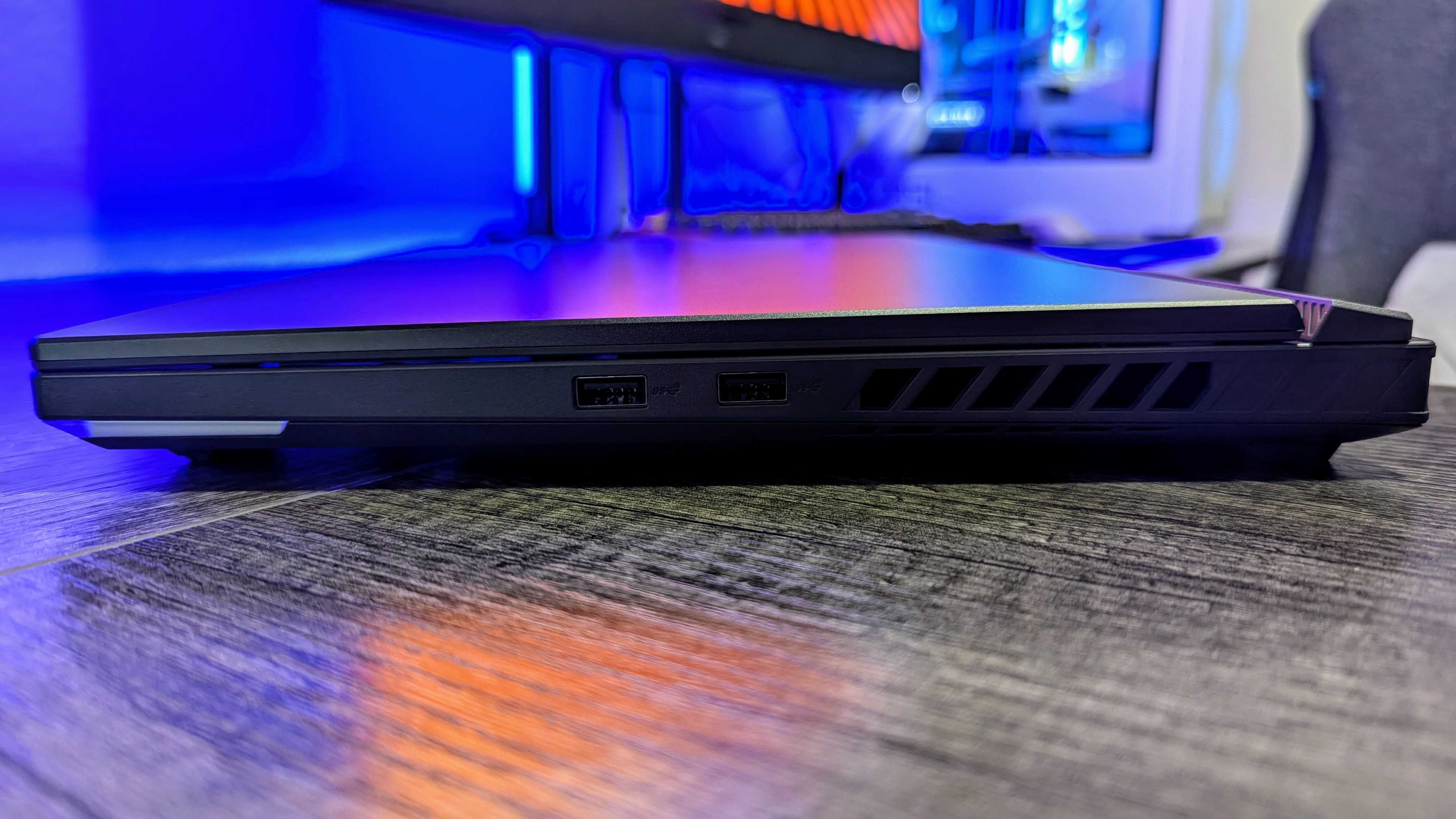

For ports, the ROG Strix G16 is relatively decked out, and at the very least makes good use of the limited space not occupied by the prominent vents.
Aside from the barrel plug for charging, you'll find an Ethernet port for wired connectivity, an HDMI 2.1 port for display output, two full-speed USB Type-A ports, and two USB Type-C 4.0 ports — both with the same bandwidth and display output as Thunderbolt 4.
ROG Strix G16 review: Display quality
High-end gaming laptops have begun to phase out traditional, back-lit IPS LCD panels for OLED or mini-LED displays, but the ROG Strix G16 achieves its slightly more competitive pricing by sticking with the older tech.
It's not to this laptop's detriment, either; this is a beautiful, vibrant screen with great color reproduction and excellent performance. Company-specific branding normally doesn't mean much, but I understand ASUS calling this an "ROG Nebula Display."
It's a QHD+ panel with a 240Hz refresh rate, and it's comfortable for productivity, punchy for media consumption, and responsive for gaming. The backlighting is also quite consistent across the panel, which is a common problem for IPS LCD displays.
Slim bezels on three sides put the screen front and center, and there's a surprisingly effective anti-reflective coating to keep the glare off.
Setting | Brightness (nits) | Black | Contrast | White point |
|---|---|---|---|---|
0% | 26.3 | 0.01 | 1,920:1 | 6,100 (0.321, 0.321) |
25% | 44.6 | 0.03 | 1,610:1 | 6,100 (0.320, 0.321) |
50% | 87.1 | 0.06 | 1,560:1 | 6,200 (0.320, 0.321) |
75% | 226.4 | 0.17 | 1,370:1 | 6,300 (0.318, 0.320) |
100% | 518.5 | 0.37 | 1,400:1 | 6,400 (0.315, 0.318) |
In testing, the ROG Strix G16's display performs well, achieving higher-than-average color accuracy and a respectable max brightness of over 500 nits. If this screen has any weakness, it's the average contrast ratio across the board and the slightly inconsistent white balance (the panel tends to get cooler as it gets brighter).
You do get Dolby Vision HDR support, but like with most laptop displays, it's not going to make a dramatic difference. There is adaptive sync with NVIDIA G-SYNC compatibility, too.
ROG Strix G16 review: Performance and thermals
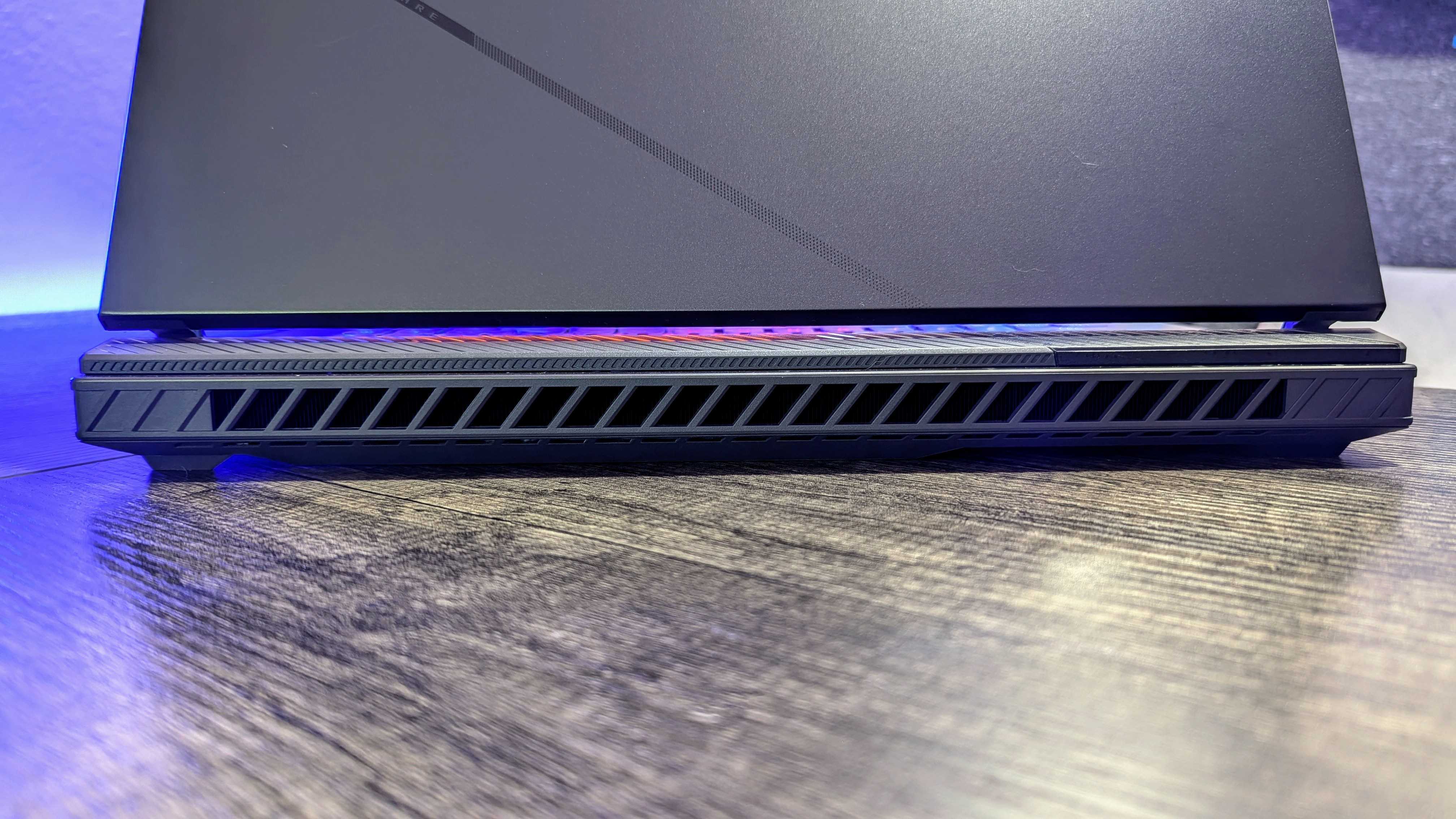
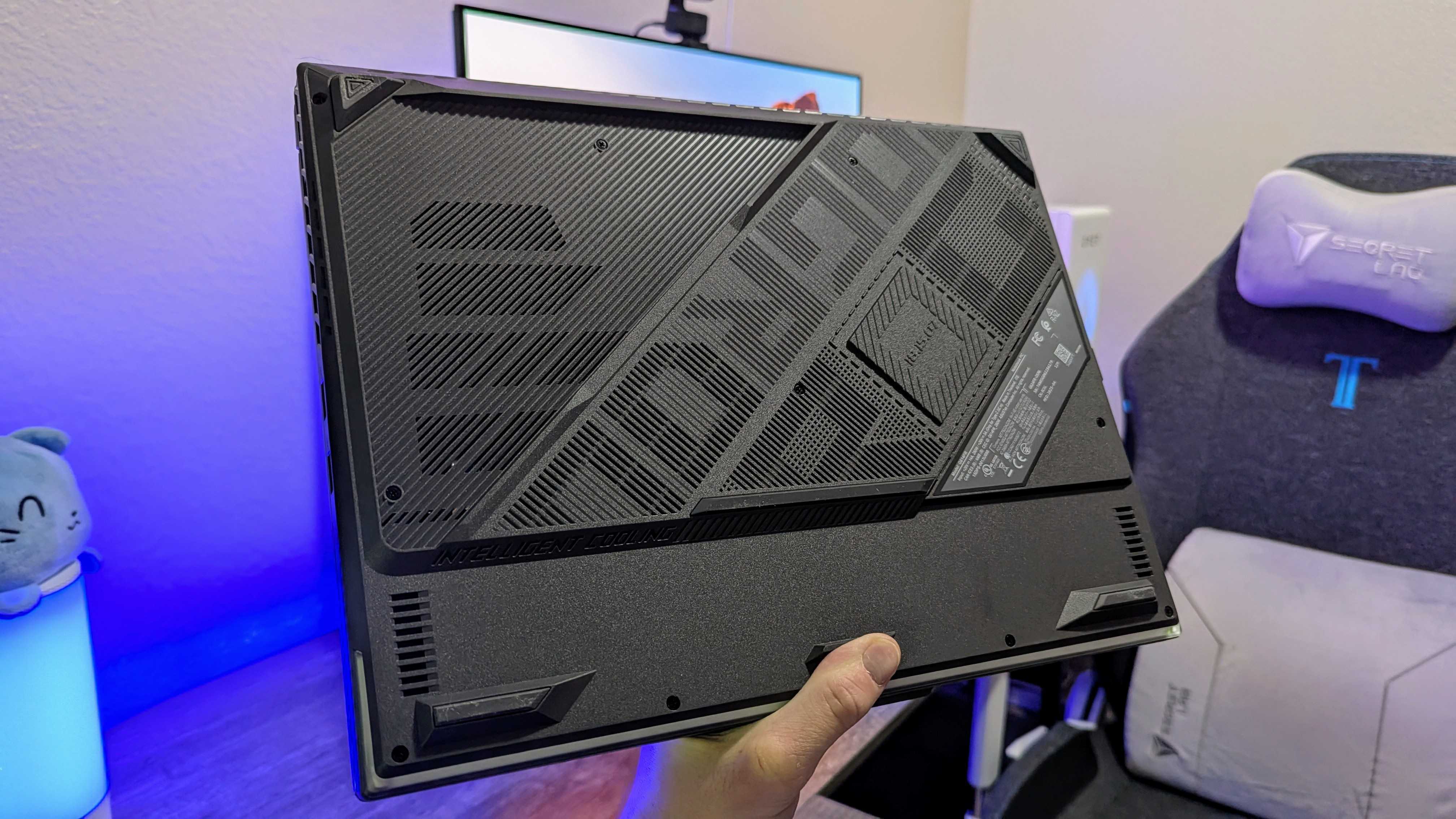
Unlike many of the latest, performance-focused gaming laptops we've seen lately, this version of the ROG Strix G16 does not rely on the latest Intel Core Ultra (Series 2) chipsets.
Instead, we get AMD's most powerful mobile processor ever, the Ryzen 9 9955HX (or 9955HX3D on the higher end). It's a 16-core monster designed solely with gaming in mind, and this is some impressive silicon.
That processor is paired with the NVIDIA GeForce RTX 5070 Ti, the upper mid-range of NVIDIA's new 50-series GPUs. Alongside that, you'll find two SODIMM slots and two M.2 slots to upgrade the memory and storage yourself — by default, you're looking at 32GB of dual-channel RAM and 1TB of SSD storage.
How does this combination perform? Incredibly well, as you can imagine. The ROG Strix G16 tears through basically everything you can throw at it, and it tests well, too.


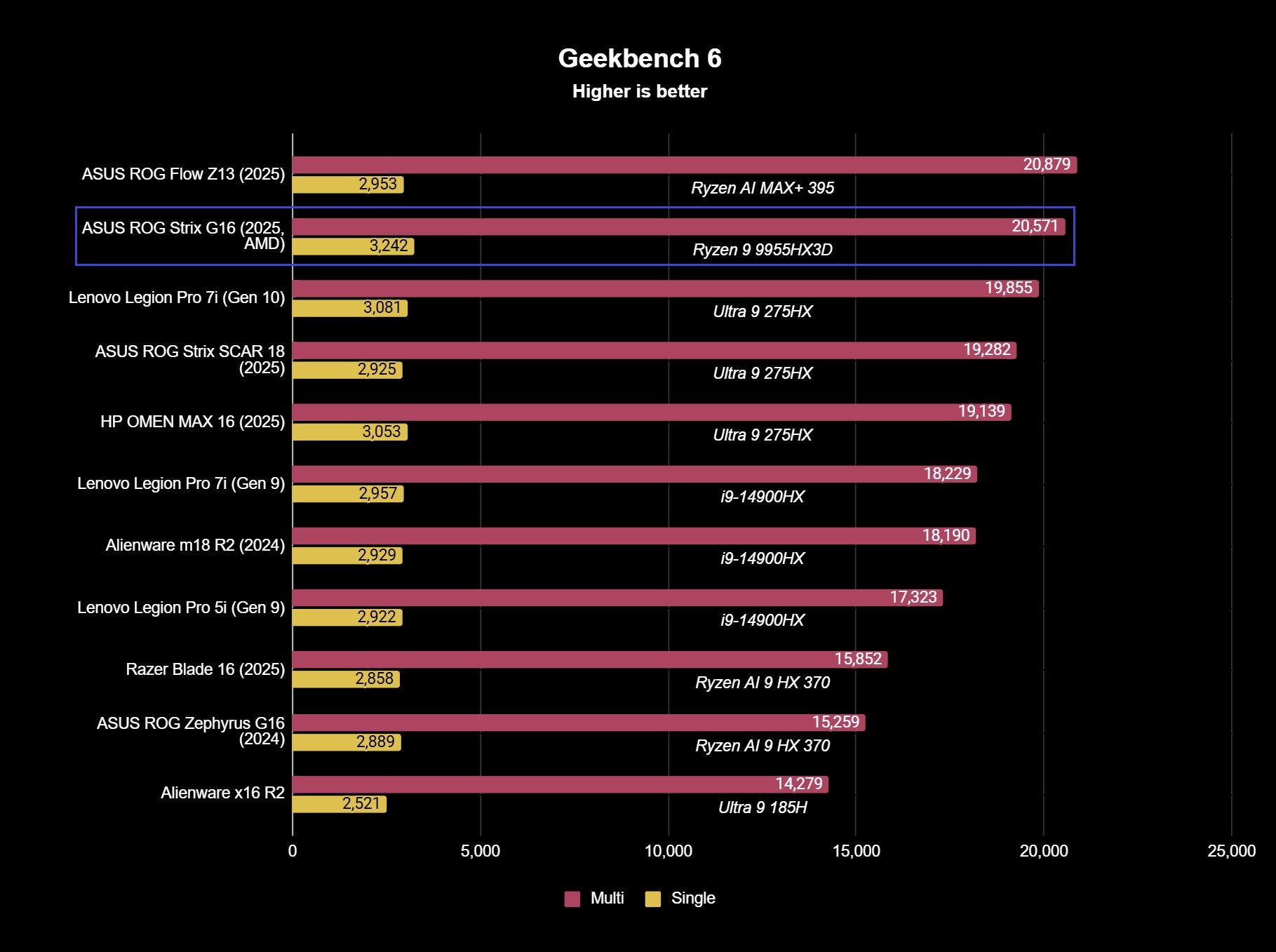
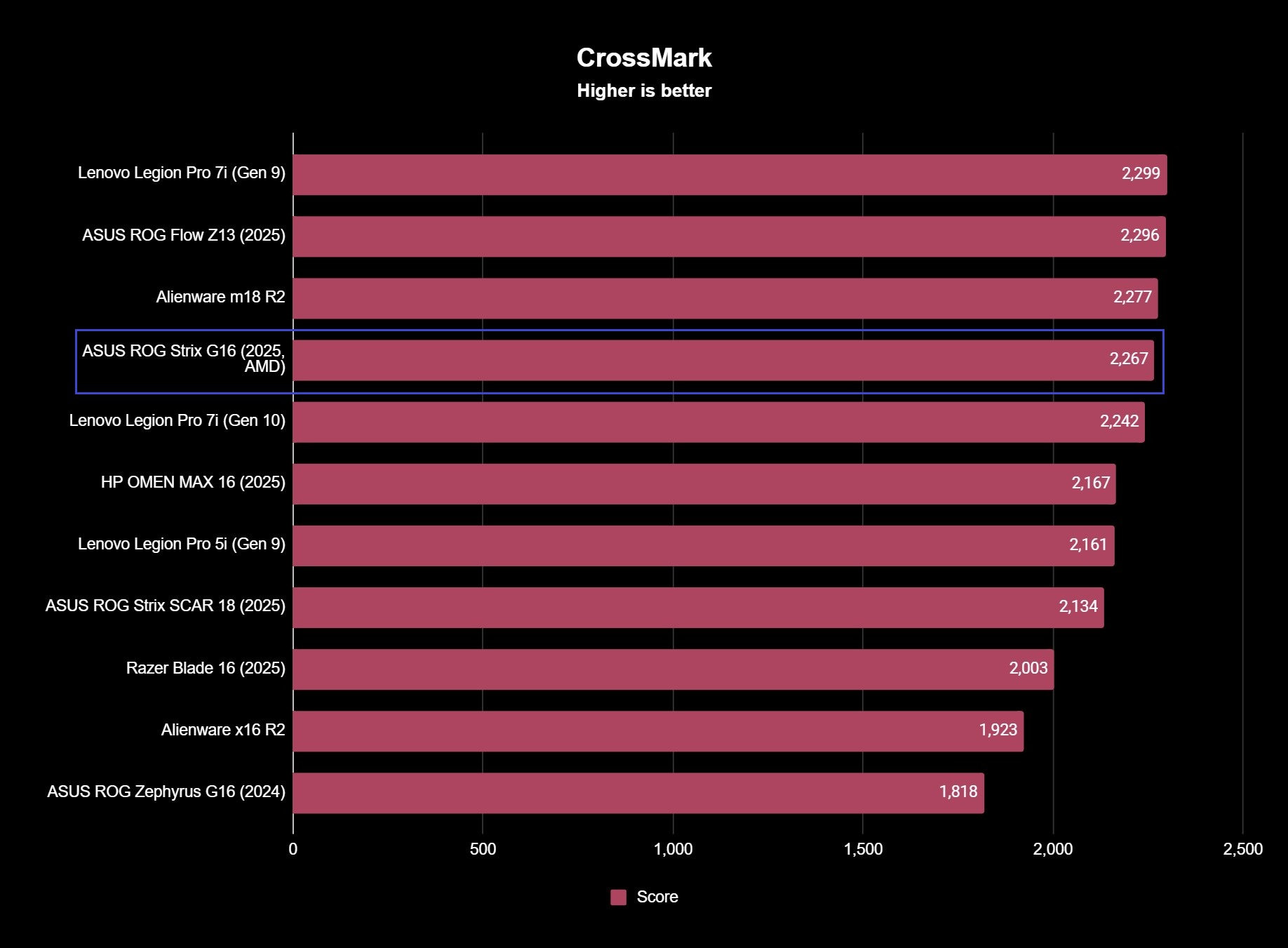

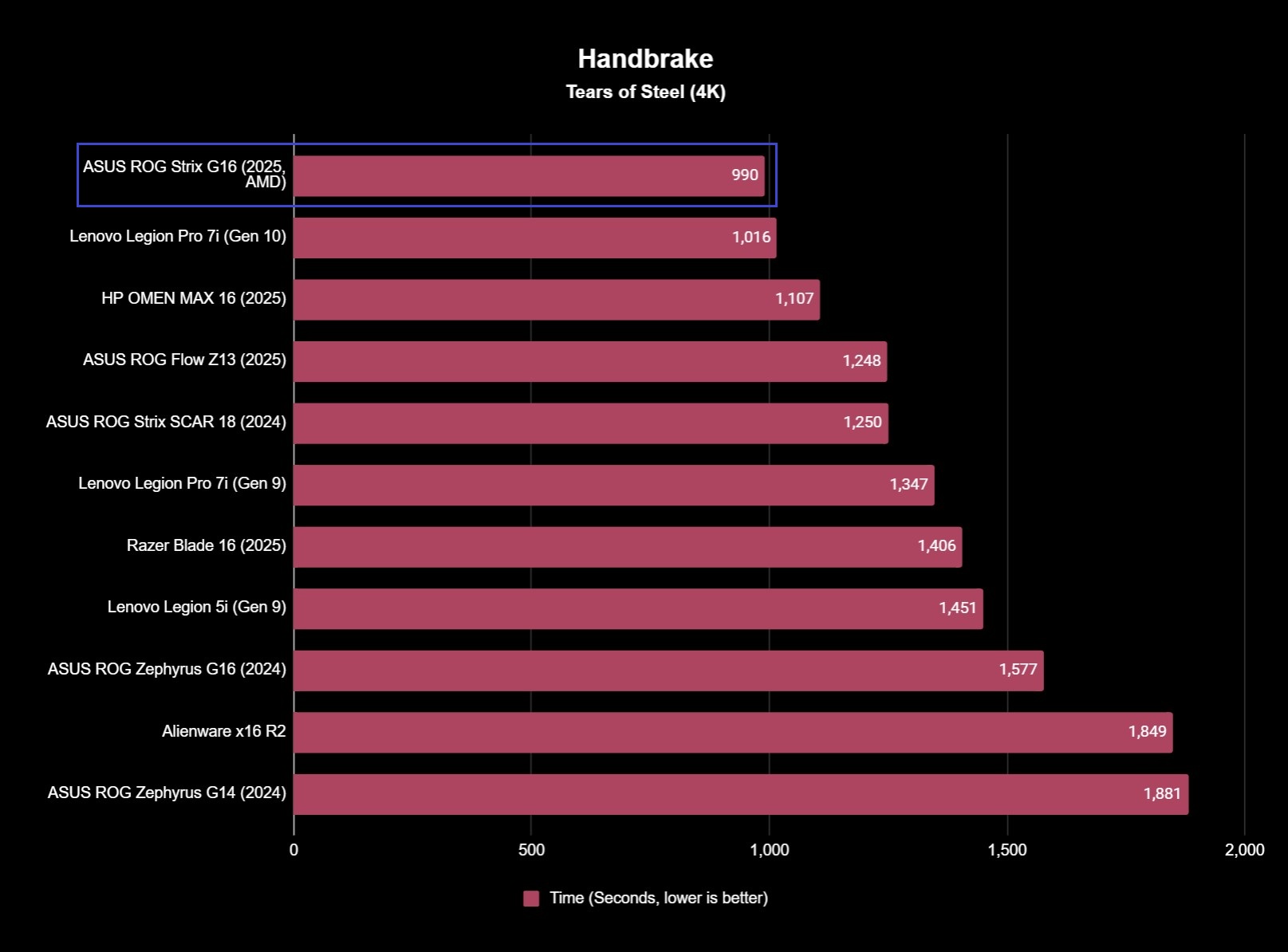
The AMD Ryzen 9 9955HX3D is powerful enough that I'm honestly shocked ASUS doesn't offer a configuration of this laptop with the GeForce RTX 5080 GPU inside. The 5070 Ti we got is more than enough for most people, but I would've been interested in some more direct comparisons with Intel-powered systems.
Either way, I can't complain about performance — and that includes thermal management. This laptop's fans can get audibly loud but not obnoxious, I never felt an uncomfortable amount of heat, and the ROG Strix G16 maintained a 98.2% framerate stability after 25 consecutive loops of 3DMark's Time Spy test.
Long gaming sessions are a breeze.
- Forza Horizon 5 — 134 FPS (Extreme preset, 1600p resolution, 240Hz refresh rate, v-sync enabled, NVIDIA DLSS Super Resolution/DLSS Frame Generation/Reflex Low Latency disabled) | 195 FPS (Max settings, v-sync disabled, NVIDIA DLSS Super Resolution set to Auto, NVIDIA DLSS Frame Generation/Reflex Low Latency enabled)
- Gears 5 — 124 FPS (Ultra preset, 1600p resolution, uncapped framerate, v-sync enabled)
- Call of Duty: Black Ops 6 — 135 FPS (Extreme preset, 1600p resolution, 240Hz refresh rate, v-sync enabled, NVIDIA DLSS Super Resolution set to Performance, NVIDIA DLSS Frame Generation disabled, NVIDIA Reflex Low Latency enabled)
- Cyberpunk 2077 — 69 FPS (Ray Tracing: Ultra preset, 1600p resolution, 240Hz refresh rate, v-sync enabled, NVIDIA DLSS Super Resolution Transformer Model set to Auto, NVIDIA DLSS Frame Generation/Ray Reconstruction disabled, NVIDIA Reflex Low Latency enabled) | 142 FPS (Ray Tracing: Overdrive preset, v-sync disabled, NVIDIA DLSS Multi-Frame Generation set to 4x, NVIDIA DLSS Ray Reconstruction enabled)
With the RTX 5070 Ti in tow, the ROG Strix G16 performed exactly where I expected in games. There's more than enough power here to play practically any modern PC game at high to ultra settings and achieve stable, smooth framerates, and leaning on NVIDIA's impressive DLSS 4 tech can let you keep those settings and take advantage of that 240Hz display.
ROG Strix G16 review: Software and AI experience
One of the major differences between AMD's Ryzen 9 9955HX3D and the Intel Core Ultra 9 275HX is the complete lack of a Neural Processing Unit (NPU), so the ROG Strix G16 isn't technically an AI PC.
Of course, you can still take full advantage of the NVIDIA GPU, which is designed from the ground up with artificial intelligence in mind. Just don't expect any Copilot+ PC or ASUS-specific AI features.
What you will find is an assortment of AMD, NVIDIA, Dolby, and (especially) ASUS apps. ASUS preloads a little too much of its own software, in my opinion, and you'll also catch unwanted add-ons like McAfee Antivirus and CapCut, but this build of Windows 11 is mostly clean.
Most of your management of the ROG Strix G16's hardware will be divided between the MyASUS and Armoury Crate programs. It's a little annoying to have two separate apps, and Armoury Crate confusingly and arbitrarily divides your system settings, though.
ROG Strix G16 review: Battery experience
Gaming laptops like the ASUS ROG Strix G16 may pack some of the largest batteries possible, but often boast some of the shortest battery lives. I didn't expect any different with the ROG Strix G16, but I was gently surprised.
This 90Whr battery cell still can't be described as having "all-day" endurance, but I was able to get 3-5 hours of actual usage without trying too hard or disabling default features like the RGB lighting.
A Windows Battery Report confirmed those findings, and running the ROG Strix G16 through an hour-long loop of a generic Microsoft Office workload and HD video playback via Procyon resulted in battery drains of 28% and 22%, respectively.
To summarize: this is a gaming laptop, but the ROG Strix G16 does perform a little better in this regard than many of the comparable Intel-powered laptops I've tested.
In terms of performance, you lose around 29% CPU performance and 62% GPU performance on battery power. That's a pretty severe dip, especially for the GPU, but even with that throttling, the ROG Strix G16 is still more performant on both accounts than most laptops without a discrete GPU.
ROG Strix G16 review: Keyboard and touchpad
I figured the ROG Strix G16 would have a good keyboard, but that's not a positive enough descriptor to adequately capture how much I ended up enjoying these keys.
Many gaming laptops take normal keyboards and slap RGB lighting on them, but the ROG Strix G16 really feels like it was designed for gaming. You get large, spacious keys with deep travel and a responsive, tactile action, full-sized arrow keys with built-in page navigation, dedicated, full-sized media controls, five additional macro keys, and per-key RGB lighting.
It offers a great typing and gaming experience, and I'm a big fan. The only oddity here is the touchpad, which brings over a productivity-focused feature from some of ASUS' non-gaming devices: a hidden ten-key number pad, lit up in LEDs.
The touchpad itself is average. Microsoft Precision drivers enable gesture support, but this touchpad doesn't feel as responsive as the best. Hold down the "Numlk" text, though, and you'll activate the number pad. It's better to have than not have, and I'm sure some will appreciate having this (and not having a cramped keyboard with a down-sized number pad squeezed in).
ROG Strix G16 review: Other hardware
It's in the finer details where you can see where ASUS made some cuts to shave costs down. For example, the FHD webcam and microphone array are exactly as average as most gaming laptops, and you don't get any Windows Hello facial recognition (or any other biometric authentication, for that matter).
Wireless connectivity is great, but also a generation behind with Wi-Fi 6E and Bluetooth 5.3.
There aren't any standout features, although I already mentioned the extra (customizable) keys ASUS provides on the keyboard, which is a nice plus, and the per-key RGB lighting and front-facing RGB lightbar are of a higher quality than I've come to expect from ASUS' beefiest gaming laptops.
I was a little shocked to spin up these speakers, though. Dual, down-firing speakers do not instill confidence, even with Dolby Atmos support, but these speakers are louder, clearer, and deeper than they have any right to be. It's still only two speakers, though, and with poor positioning at that, so don't expect the world.
ROG Strix G16 review: Also consider
HP OMEN MAX 16 (2025) — Core Ultra 7 255HX | RTX 5070 | 16GB RAM | 1TB SSD
Buy now: $2,399.99 at HP
With a wide range of configurations, new AMD and Intel options, and lowered prices, the HP OMEN MAX 16 is now an excellent premium option with a beautiful design. With sales, it's the better value compared to the ROG Strix G16... with sales.
👉See at: HP.com
👀Also consider: Configure your own HP OMEN MAX 16 (2025, Intel) from $2,099.99 at HP or your own HP OMEN MAX 16 (2025, AMD) from $1,999.99 at HP
Lenovo Legion Pro 7i (Gen 10) — Core Ultra 9 275HX | RTX 5080 | 32GB RAM | 1TB SSD
Buy now: $2,969.99 at Best Buy
This is my current favorite 16-inch gaming laptop you can buy, and this configuration saves you a few hundred compared to building the same model straight from the source. If you want the ultimate gaming laptop, this is the one I'd choose.
Windows Central review ⭐⭐⭐⭐½
👉See at: BestBuy.com
👀Also consider: Configure your own Lenovo Legion Pro 7i (Gen 10) from $2,909.99 at Lenovo
ROG Strix G16 review: My final thoughts
✅You should buy this if ...
- You want an AMD-powered gaming laptop instead of Intel
- You want enough power to play all the latest and greatest games.
- You like a deep keyboard with lots of extra keys.
❌You should not buy this if ...
- You care a lot about having a sleek, premium design.
- You want an option to upgrade to an RTX 5080 GPU.
I have to give ASUS its just dues, the ROG Strix G16 is a much better gaming laptop than I would've predicted had you asked me before I began testing it. I absolutely love the Zephyrus line and ASUS' consumer laptops, but the Strix products have never particularly amazed me.
The ASUS ROG Strix G16 (2025, AMD) isn't revolutionary by any means, but it is a really good, well-rounded gaming laptop with an excellent keyboard and fantastic, reliable performance. It's also priced well, and it's sure to go on sale in the coming months, too.
It was nice to test a gaming laptop powered by AMD's latest instead of Intel, too. I just wish this version had benefited from the same design update as the Intel-powered Strix G16, and that we had more configuration options to build our dream laptop.
Still, I really like this machine, and you might, too. You can get my recommended ASUS ROG Strix G16 (2025, AMD) configuration for $2,499.99 at Best Buy.
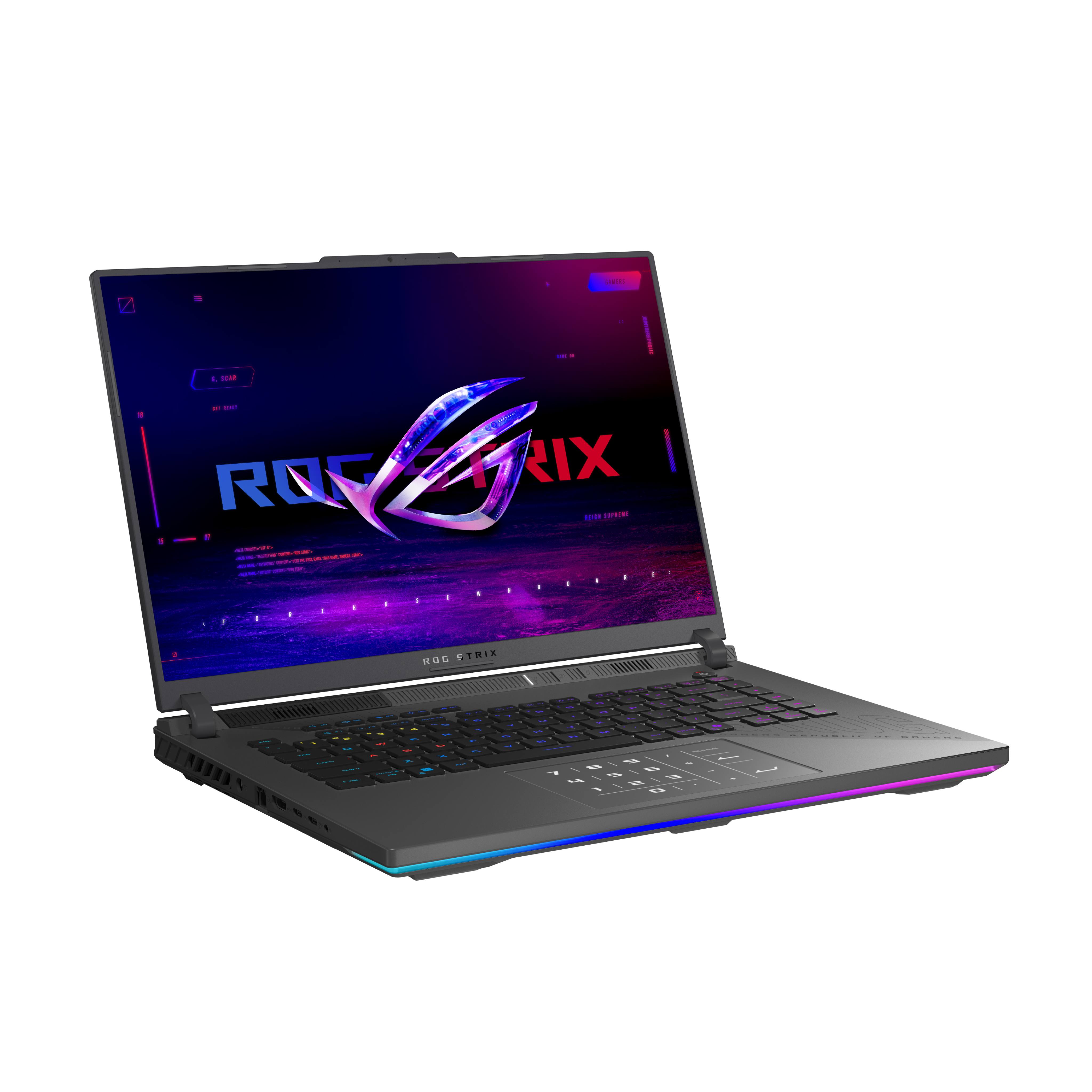
The ROG Strix G16 isn't trying to compete with the most premium devices from Razer or Lenovo, and instead offers a lot of power in a solidly built chassis, paired with a fantastic keyboard and a comfortable display. It could be the underdog of the premium gaming laptop segment.

Zachary Boddy (They / Them) is a Staff Writer for Windows Central, primarily focused on covering the latest news in tech and gaming, the best Xbox and PC games, and the most interesting Windows and Xbox hardware. They have been gaming and writing for most of their life starting with the original Xbox, and started out as a freelancer for Windows Central and its sister sites in 2019. Now a full-fledged Staff Writer, Zachary has expanded from only writing about all things Minecraft to covering practically everything on which Windows Central is an expert, especially when it comes to Microsoft.
You must confirm your public display name before commenting
Please logout and then login again, you will then be prompted to enter your display name.


